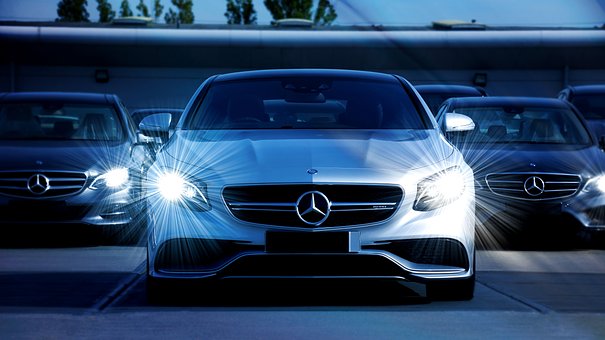

Like 250,000 motorists every year, you have bought a new or used car in the European Union and want to register it in France? You will need to obtain a Certificate of Conformity to do so.
What is the Certificate of Conformity?
The Certificate of Conformity, in force since 1996, is issued by the manufacturer when the vehicle is purchased. This document allows the vehicle to be sold in the country of manufacture, but also in another European country, and attests to the vehicle’s compliance with European standards and French regulations. The certificate of conformity includes all the vehicle’s data, which enables the ANTS to enter your vehicle registration document in their SIV system.
The various sections of the certificate of conformity include the number of axles and wheels, its mass, cubic capacity, maximum power, type of gearbox, tyres, steering and assistance mode, braking system, noise level, exhaust emissions and tax power depending on the country.
Cost of the Certificate of Conformity
Obtaining the Certificate of Conformity or National Identification Certificate costs between EUR 129 and EUR 659, but it can be obtained free of charge if the car is bought new in Europe and has never been registered before. In most cases, the certificate of conformity is issued free of charge by the manufacturer. All you have to do is ask for it when you buy the car.
Is the Certificate of Conformity compulsory for a used car?
It often happens that the certificate of conformity is lost when a used car is sold. In this case, you should apply to EUROCOC France for a new one.
Where can I order the Certificate of Conformity?
It is possible to order the Certificate of Conformity online. You do not need to contact the French homologation department of the make of your vehicle or visit a dealer.
Do you need a Certificate of Conformity? We are at your service: https://www.eurococ.eu/en/coc-pedia/coc-oreder/
A 2022 ecological penalty increased by a weight-based fee.
Please pay attention to the relevant sections of the certificate of conformity:
12.1 Mass of the vehicle with bodywork in running order
12.2 Mass of the vehicle (without driver, coolant, lubricant, fuel)
14.1 Technically permissible maximum laden mass
14.2 Distribution of this mass among the axles
14.3 Technically permissible maximum mass on each axle
Maximum permissible mass of the roof
The amount of the malus increases again in stages in 2022 to a maximum of 40,000 euros (capped at 50% of the vehicle price) for a vehicle emitting more than 223 g of CO2/km (WLTP cycle). And in 2023, the maximum threshold will peak at 50,000 euros. Never before seen!
Illustration with the malus grid below:
| (g/km) | Amounts 2021 in Euros | Amounts 2022 in Euros | Amounts 2023 in Euros |
| 123 | – | – | 50 |
| 124 | – | – | 75 |
| 125 | – | – | 100 |
| 126 | – | – | 125 |
| 127 | – | – | 150 |
| 128 | – | 50 | 170 |
| 129 | – | 75 | 190 |
| 130 | – | 100 | 210 |
| 131 | – | 125 | 230 |
| 132 | – | 150 | 240 |
| 133 | 50 | 170 | 260 |
| 134 | 75 | 190 | 280 |
| 135 | 100 | 210 | 310 |
| 136 | 125 | 230 | 330 |
| 137 | 150 | 240 | 360 |
| 138 | 170 | 260 | 400 |
| 139 | 190 | 280 | 450 |
| 140 | 210 | 310 | 540 |
| 141 | 230 | 330 | 650 |
| 142 | 240 | 360 | 740 |
| 143 | 260 | 400 | 818 |
| 144 | 280 | 450 | 898 |
| 145 | 310 | 540 | 983 |
| 146 | 330 | 650 | 1 074 |
| 147 | 360 | 740 | 1 172 |
| 148 | 400 | 818 | 1 276 |
| 149 | 450 | 898 | 1 386 |
| 150 | 540 | 983 | 1 504 |
| 151 | 650 | 1 074 | 1 629 |
| 152 | 740 | 1 172 | 1 761 |
| 153 | 818 | 1 276 | 1 901 |
| 154 | 898 | 1 386 | 2 049 |
| 155 | 983 | 1 504 | 2 049 |
| 156 | 1 074 | 1 629 | 2 370 |
| 157 | 1 172 | 1 761 | 2 544 |
| 158 | 1 276 | 1 901 | 2 726 |
| 159 | 1 386 | 2 049 | 2 918 |
| 160 | 1 504 | 2 205 | 3 119 |
| 161 | 1 629 | 2 370 | 3 331 |
| 162 | 1 761 | 2 544 | 3 552 |
| 163 | 1 901 | 2 726 | 3 784 |
| 164 | 2 049 | 2 918 | 4 026 |
| 165 | 2 205 | 3 119 | 4 279 |
| 166 | 2 370 | 3 331 | 4 543 |
| 167 | 2 544 | 3 552 | 4 818 |
| 168 | 2 726 | 3 784 | 5 105 |
| 169 | 2 918 | 4 026 | 5 404 |
| 170 | 3 119 | 4 279 | 5 715 |
| 171 | 3 331 | 4 543 | 6 039 |
| 172 | 3 552 | 4 818 | 6 375 |
| 173 | 3 784 | 5 105 | 6 724 |
| 174 | 4 026 | 5 404 | 7 086 |
| 175 | 4 279 | 5 715 | 7 462 |
| 176 | 4 543 | 6 039 | 7 851 |
| 177 | 4 818 | 6 375 | 8 254 |
| 178 | 5 105 | 6 724 | 8 671 |
| 179 | 5 404 | 7 086 | 9 103 |
| 180 | 5 715 | 7 462 | 9 550 |
| 181 | 6 039 | 7 851 | 10 011 |
| 182 | 6 375 | 8 254 | 10 488 |
| 183 | 6 724 | 8 671 | 10 980 |
| 184 | 7 086 | 9 103 | 11 488 |
| 185 | 7 462 | 9 550 | 12 012 |
| 186 | 7 851 | 10 011 | 12 552 |
| 187 | 8 254 | 10 488 | 13 109 |
| 188 | 8 671 | 10 980 | 13 682 |
| 189 | 9 103 | 11 488 | 14 273 |
| 190 | 9 550 | 12 012 | 14 881 |
| 191 | 10 011 | 12 552 | 15 506 |
| 192 | 10 488 | 13 109 | 16 149 |
| 193 | 10 980 | 13 682 | 16 810 |
| 194 | 11 488 | 14 273 | 17 490 |
| 195 | 12 012 | 14 881 | 18 188 |
| 196 | 12 552 | 15 506 | 18 905 |
| 197 | 13 109 | 16 149 | 19 641 |
| 198 | 13 682 | 16 810 | 20 396 |
| 199 | 14 723 | 17 490 | 21 171 |
| 200 | 14 881 | 18 188 | 21 966 |
| 201 | 15 506 | 18 905 | 22 781 |
| 202 | 16 149 | 19 641 | 23 616 |
| 203 | 16 810 | 20 396 | 24 472 |
| 204 | 17 490 | 21 171 | 25 349 |
| 205 | 18 188 | 21 966 | 26 247 |
| 206 | 18 905 | 22 781 | 27 166 |
| 207 | 19 641 | 23 616 | 28 107 |
| 208 | 20 396 | 24 472 | 29 070 |
| 209 | 21 171 | 25 349 | 30 056 |
| 210 | 21 966 | 26 247 | 31 063 |
| 211 | 22 781 | 27 166 | 32 094 |
| 212 | 23 616 | 28 107 | 33 147 |
| 213 | 24 472 | 29 070 | 34 224 |
| 214 | 25 349 | 30 056 | 35 324 |
| 215 | 26 247 | 31 063 | 36 447 |
| 216 | 27 166 | 32 094 | 37 595 |
| 217 | 28 107 | 33 147 | 38 767 |
| 218 | 29 070 | 34 224 | 39 964 |
| 219 | 30 000 | 35 324 | 41 185 |
| 220 | 30 000 | 36 447 | 42 431 |
| 221 | 30 000 | 37 595 | 43 703 |
| 222 | 30 000 | 38 767 | 45 000 |
| 223 | 30 000 | 39 964 | 46 323 |
| 224 | 30 000 | 40 000 | 47 672 |
| 225 | 30 000 | 40 000 | 49 047 |
| >226 | 30 000 | 40 000 | 50 000 |
Vehicles concerned
The tax on the mass in running order (weight malus) applies to passenger vehicles (ex-private vehicles). It does not apply to commercial vehicles. Passenger cars are the following vehicles:
- M1 category car
- Category N1 vehicle with a pick-up truck body and at least 5 seats, unless it is used exclusively for the operation of ski lifts and ski areas
- Multi-purpose vehicle of category N1 intended for the transport of passengers, their luggage or their goods
The tax applies to the first registration of the vehicle in France from 2022. It therefore concerns new vehicles and imported second-hand vehicles registered in France for the first time.
Exempted vehicles
- Disability: the tax does not apply to the following vehicles:
- Wheelchair accessible vehicles
- Vehicles acquired by a person with an inclusion mobility card bearing the mention disability or a military disability card. Only one vehicle per beneficiary may be exempted. The exemption also applies in the case of a long-term rental scheme.
- Vehicle acquired by a person with a minor or dependent child in their tax household who has a mobility inclusion card (CMI) bearing the mention disability or a military disability card. The exemption can only apply to one vehicle per beneficiary. The exemption also applies in the case of a long-term rental arrangement.
- Low-emission vehicles: The tax does not apply to the following vehicles:
- Electric and/or hydrogen powered vehicles
- Plug-in hybrid electric vehicles with a range of more than 50 km in fully electric mode in the city
How much is the weight tax?
The tax on the vehicle’s mass in running order is set at €10 per kg from 1,800 kg. The tax on the mass in running order is capped at €40,000 by adding the CO2 penalty and the weight penalty.
Calculate the amount of the weight penalty (tax on the mass in running order)
Can I benefit from a reduction?
Time between registration abroad and in France
A reduction in the weight-related tax applies if the first registration in France takes place 6 months or more after the registration abroad. The first registration abroad must take place in 2022. The reduction is 10% per year since the first registration.
Large families
Large families can benefit from a reduction in the weight penalty of 200 kg per child within the limit of a single vehicle with 5 or more seats.
Good to know
A legal entity can benefit from a reduction of 400 kg when the vehicle has 8 or more seats.
When do I have to pay the weight-related penalty?
The cost of the registration certificate (carte grise), which includes the tax on the mass in running order (weight penalty), is included in the invoice if the dealer handles the registration of the vehicle. Otherwise, you pay the weight penalty when you register the vehicle on the ANTS website. It is the date of registration that counts, not the date of order or purchase.
What impact does the weight-related penalty have on the cost of the vehicle registration document?
You can use a simulator to calculate the cost of the vehicle registration document:
Calculate the cost of the car registration
EUROCOC at your service
EUROCOC provides you with the Certificate of Conformity you need
EUROCOC is a recognised player and we provide you with the Certificate of Conformity you need for all types of vehicles: cars, motorbikes and commercial vehicles.
We are market leaders and have been issuing Certificates of Conformity since 2008.
More generally, the documents needed to register an imported car in France are listed here:
- The tax receipt or, in the case where VAT is not applicable, the certificate of customs clearance n°846A; (The tax receipt guarantees that a vehicle purchased in another European Union country is in order with regard to VAT.
- The foreign vehicle registration document;
- The French technical inspection of the vehicle
- The vehicle’s certificate of transfer or purchase invoice;
- The European certificate of conformity (to obtain your COC as soon as possible, we recommend that you order your certificate from https://www.eurococ.eu/en/#products
as soon as you purchase your vehicle)
- Your driving licence;
- Your identity document;
- Proof of addres
- A certificate of insurance for the vehicle.
Please read our article for more information on registering your vehicle.












